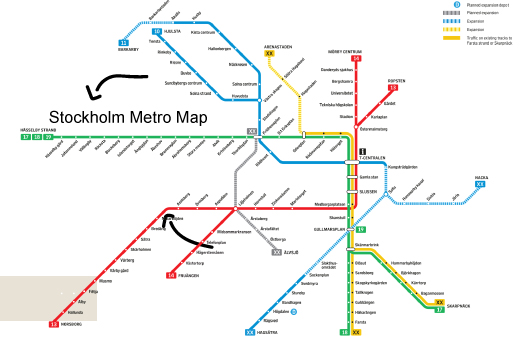The Stockholm Metro, inaugurated in 1950, has evolved into one of Europe’s most extensive and reliable metro systems. Starting with just a few lines, it now spans approximately 110 kilometers (68 miles) of track, serving the city and its suburbs efficiently. This growth reflects its importance in Stockholm’s transportation network and its role in facilitating convenient travel throughout the region.
Architectural Highlights:
Beyond its functionality, each station in the Stockholm Metro is a work of art. From the sleek, minimalist design of newer stations to the elaborate murals and sculptures in older ones, every stop offers a unique visual experience. Stations like T-Centralen, Solna Centrum, and Kungsträdgården are celebrated for their stunning artwork and architecture.
Efficiency and Frequency:
The Metro operates with remarkable punctuality, offering trains every few minutes during peak hours and generally no longer than 10-minute intervals throughout the day. This frequency makes it easy for commuters and tourists alike to navigate the city swiftly.
Integration with Other Transport Modes:
Stockholm’s public transport system, managed by SL (Storstockholms Lokaltrafik), integrates seamlessly with buses, trams, and ferries. This interconnected network ensures that passengers can reach virtually any corner of the city and its surrounding suburbs efficiently.
Sustainability Initiatives:
In line with Sweden’s commitment to sustainability, the Stockholm Metro emphasizes eco-friendly practices. Many trains use energy-efficient technologies, and efforts are ongoing to reduce carbon footprints further.
Contact Information:
- phone number: +46 8 600 10 00
- For more details please visit its website. Explore additional metro lines across Europe
Cultural Significance:
The Metro not only serves as a practical mode of transportation but also reflects Stockholm’s cultural identity. It is deeply embedded in the daily lives of Stockholmers and is often a backdrop for cultural events and celebrations.
Tourist Tips:
The Stockholm Metro isn’t just transportation; it’s a cultural journey. Its art-filled stations offer tourists a unique underground experience, with guided tours available to explore the history behind the artworks.

